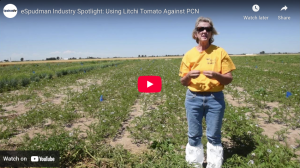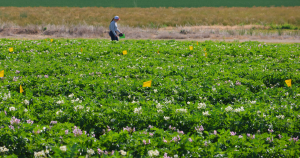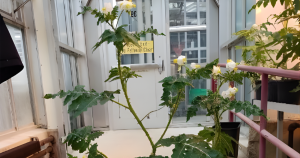Molecular Markers for Conventional Potato Breeding
Breeding for nematode resistance frequently involves crossing a resistant cultivar with a susceptible cultivar. The progeny resulting from this cross may or may not be resistant.
One approach to identify resistant progeny is to challenge them with the nematode, however when hundreds or thousands of potato progeny are involved this is not always possible.
An alternative approach is to identify progeny which may have the desired resistance gene using a molecular marker. Then, at a later point in time, the plant with the marker can be challenged with the nematode to confirm resistance.
What is a molecular marker?
- Ideally a marker identifies a single location on a potato chromosome. There are 12 potato chromosomes.
- A molecular marker is usually close to the gene controlling resistance (or another trait).
- The molecular marker’s name is likely different than the gene’s name.
- There are many, many different types of molecular markers. That is, there are many ways to identify a single location on a chromosome.
- In the case of the molecular marker 57R, the presence of the lower fragment indicates (suggests) the H1 gene is present in the plant being evaluated (see gel image).
- Use of molecular markers is NOT a form of genetic engineering or genetic modification.


There are numerous molecular markers that identify different potato genes associated with nematode resistance. The Kuhl lab regularly uses markers to identify nematode resistance genes H1, Gpa5, GpaIV, Grp1, Gpa2, and Gro1-4.







